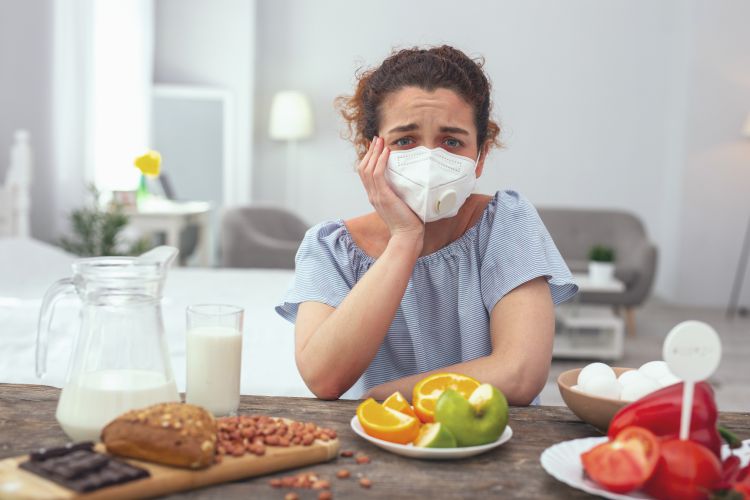 One in six Canadians suffers from allergies. The things they are allergic to range from something as commonly found as dust and pollen to as rare as mango; they also range in severity.
One in six Canadians suffers from allergies. The things they are allergic to range from something as commonly found as dust and pollen to as rare as mango; they also range in severity.
There’s no shame in having allergies. However, some of the most dangerous allergies out there are food allergies. Often, people with food allergies will ingest something without realizing it has their allergen in it.
How do we avoid this? Education.
This article will walk you through the most common food allergies. This will help them know themselves and avoid food that might contain these allergens. It will also help food providers.
Let’s get into it.
1. Soy
Not eating dairy is in right now. There are close to 2 million vegans in Canada, and the market for vegan products is so wide, that many others have taken to going dairyless. After all, tons of people are lactose intolerant.
However, many dairy products use soy as their replacement. This can cause problems for some people.
The symptoms of a soy allergy include mouth-tingling, itchiness, a runny nose, breathing difficulties, and rashes. If it gets really bad, someone can go into anaphylactic shock as a result.
Luckily, soy has to be labeled on all products contained within. All it takes for you to avoid falling victim to your soy allergy is to make sure you read. Also, remember that miso soup and many vegetarian food dishes make use of soy.
But those aren’t the only places you’ll find soy. Are you aware that soy is a contender for the most common food allergen in a sandwich? Many processed deli meats contain soy, such as sausages and hot dogs.
2. Peanuts
This is perhaps the most obvious food allergy out there. Everyone remembers the kid from their elementary school who was allergic to peanuts. However, peanut allergies are so high-profile because of how dangerous they can be.
Peanut allergies can cause hives, redness, swelling, and itching and tingling sensation in the mouth and throat, and a tightening of the throat. Many people often describe not being able to breathe. Those suffering from peanut allergies might also experience runny noses, shortness of breath, and digestive problems.
Peanut allergies can also cause anaphylaxis. In fact, unlike soy, they’re the most common source of food-related anaphylaxis.
Some people suffering from peanut allergies have it so severe that they cannot come into contact with a peanut with any part of their body. Others will suffer from severe symptoms even if they inhale molecules containing peanuts. Anyone who lives with them needs to make sure that they avoid peanut products.
Luckily, many kids lose their peanut allergies as they grow up.
3. Shellfish
No conversation about severe food-related allergies would be complete without a mention of shellfish. These allergies are most commonly caused by eating shellfish, but many people have it as bad as some of those with peanut allergies, and cannot even breathe the steam from cooking shellfish, forcing them to alter their lives.
Unlike peanut allergies, shellfish allergies are more common in adults than children. Most people develop shellfish allergies as life rolls on. Once people develop shellfish allergies, they tend to stick around.
Shellfish are broken up into two types, crustaceans and mollusks. Mollusks consist of oysters, mussels, scallops, and clams; crustaceans consist of shrimp, crab, and lobster. Generally, crustaceans are the more dangerous allergen that more people find themselves falling victim to.
4. Milk
Now let’s take a look at an allergy that almost exclusively affects children.
Don’t get it confused with lactose intolerance, however. Lactose intolerance generally refers to problems that come from someone’s body not digesting dairy products properly. Milk allergies refer specifically to allergic reactions that arise as a result of cows’ milk.
Those suffering from milk allergies are usually children under the age of 3. These children will suffer from symptoms of rashes, hives, and vomiting. Anaphylaxis isn’t common, but it’s still a concern.
Any vegan can tell you how hard it is to avoid milk. It seems to be used in every food product out there. However, if you stay vigilant, you can avoid milk-based products and turn out fine.
However, don’t forget that most people who have these allergies are children. Formulas that don’t have milk in them will have to be sought out for children with these allergies. A health professional can usually recommend these.
5. Eggs
In a similar vein, many people are allergic to eggs. It’s the second most common food allergy in children behind peanuts. Most people grow out of it by the time they turn 16.
People suffering from egg addictions may have digestive problems, develop rashes, and eventually, develop anaphylaxis.
Those with allergies might be allergic to the yolk of the egg, but the most common egg allergies are caused due to the egg protein, contained in the egg-white. Egg white allergies and egg yolk allergies often manifest themselves in different ways.
6. Wheat
Wheat allergies are caused by the wheat protein. Much like the case of milk allergies and lactose intolerance, you shouldn’t confuse a wheat allergy for celiac disease.
People suffering from a wheat allergy often suffer from digestive problems, hives, rash, vomiting, and rashes. As always, there’s always a small but serious threat of anaphylaxis.
Those with wheat allergies have to avoid wheat products. Thankfully, there are more options now than ever before for bread products without wheat in them.
The Most Common Food Allergies
Food allergies are extremely common. Thankfully, the internet and food labels provide us with a ton of information on where these foods can sometimes hide.
Make sure you familiarize yourself with soy allergies, peanut allergies, shellfish allergies, milk allergies, egg allergies, wheat allergies, and keep your mind open to some of the other popular allergies out there. By understanding the common food allergies, you’re far more likely to keep yourself and your loved ones safe.
For more articles like this, check out our “healthy foods” section.




